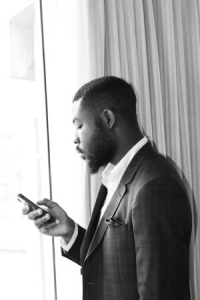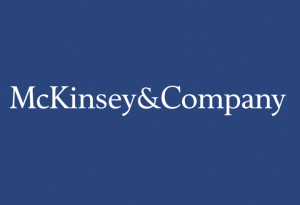Innovation
Depending on the size of the project, no more than three projects should be assigned to a UX designer at a time. Assigning them too many projects will create a bottleneck and may cause them to rush (or even skip) their user research.
Agile
Jun 21, 2022

Innovify

The uneasy marriage of agile with UX is something that cropped up in our latest #ProductTalks. Our speaker at the event, Alex Erinle of Protofast, discussed how he often encounters the challenge when speaking with UX designers. Many struggle to work in an agile way. Which causes frustration when the wider team are used to sprints and scrums.

Part of the issue lies in the Agile Manifesto itself. It was designed to help developers deliver software faster. But it paid little attention to UX – sometimes excluding it completely. It’s no wonder that UX designers often find themselves struggling when part of an agile team.
Ironically, the principles underpinning the Agile Manifesto are driven by customer needs and desires. The first of these is to “… satisfy the customer through the early and continuous delivery of valuable software.” Unfortunately, in many teams that means working at pace. But effective UX needs time to fully research user needs.
Within an agile workstyle, the whole team works simultaneously on the same parts of a project. This is done in sprints that pressure UX designers to create, test, refine and deliver their output in an impossible timeframe. It lacks the context and big-picture thinking needed for good UX. Plus, fortnightly sprints often give teams tunnel vision. They become so focused on a particular feature that the larger product and design implications are lost. Sprints give little consideration to integration, omnichannel consistency or the user interface.

Furthermore, in agile, delivering working software is the primary success metric. Developers aim to produce software that’s ‘good enough’ but may fail when it comes to UX. When solely focused on producing something that works, they may not prioritise the experience of using such software. UX is sidelined as a nice-to-have, not a necessity.
But there are ways for agile and UX to work well together. A few tweaks and allowances on both sides will help merge the two. After consulting with UX designers across the globe and researching existing literature, Erinle devised a six-point plan to help UX work in agile environments:
He particularly noted that the entire team needed some experience with UX. Understanding the nuances of UX can go a long way in placing user experience front-and-centre during the agile process. It also strengthens UX’s position as a critical part of software development.

Indeed, a McKinsey study found that strong user design was the only way for companies to stand out from the crowd. Releasing software that’s simply ‘good enough’ is no longer enough to be competitive. The same report recommends that companies embrace UX design “holistically and early in the process rather than seeing it as a small tool that fits in later.” Echoing several other recommendations for merging UX with agile.
Teams that attempted to minimise the role of UX or complete it after product launch are venturing down the wrong road. UX must be involved in the entire process, from planning to development and quality assurance. Companies that embrace UX in this way generate 32% more revenue and 56% higher shareholder returns over a 5-year period.
Embedding UX across the process is a different approach to what most developers may be used to. With UX on the team from the start, the ideas, data and customer pain points first go to them. UX then cycles through its tasks and tests its design concepts before development begins writing code. It ensures that products are built using the best execution of the right idea for the target customer.

Therefore, agile projects must give UX a head-start so that it has enough time to research, design and test. Generally speaking, they should be working two or more sprints ahead of the development team. A UX designer shouldn’t be invited to a kickoff meeting and left with a deadline to present final wireframes within a week. That’s a surefire way to fail.
UX designers also require a lot of feedback, to drive continuous improvement of their product. Agile timelines must account for this. Bringing UX in early on will help them estimate the time and budget needed. This’ll avoid surprises and conflict with the rest of the team.
It’s also worth assigning questions, bugs and other relevant tasks to UX in JIRA or whatever project management and bug tracking tool is being used. That way, everyone remains on the same page and can stay abreast of progress and challenges.
Depending on the size of the project, no more than three projects should be assigned to a UX designer at a time. Assigning them too many projects will create a bottleneck and may cause them to rush (or even skip) their user research.
Some UX designers may find it beneficial to have a basic understanding of front-end techniques like HTML and Javascript. It will help them speak the developers’ language and understand what’s being discussed in meetings. Plus, they’ll better understand any technical limitations flagged by development.
UX and agile can coexist well when everyone understands the need to support UX. Directing everything back to UX keeps users at the centre of all agile efforts. Involving UX in an agile approach needn’t be a difficult or costly endeavour. A few tweaks in timing, team meetings and resources is enough to make everything run smoothly. When UX and agile work together, they’re a force to be reckoned with.

This was a thought piece from Innovify based on May’s #ProductTalk. Keep an eye out for our future events on our Eventbrite page.
If you would like to speak at our #ProductTalk or another one of our events at a later date, please contact our Events Manager, Elena Oprea, at elena@innovify.com.
At Innovify we help start-ups, scale-ups and corporates with developing their products and services. This includes tech support, innovation ideation, agile development and much more. If this sounds like something you’re interested in, please get in contact with Maulik Sailor at maulik@innovify.com.